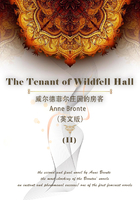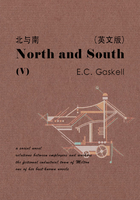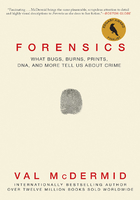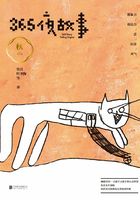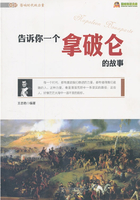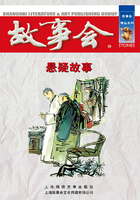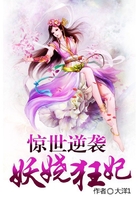The New Reality
There were three roads out of the main village of the collective farm, two of them dirt roads. The paved road led to the church, and then out to the mainland through marshy lowlands. The second road led to the sea, past the only new houses in the village, one of which belonged to the mayor, and the other to the builder. The last road went south, past the dilapidated workshops, ending by a little harbour on a muddy beach. From there, in the distance, you could see Haapsalu, the nearest town.
Through September there were many visits by exiled Estonian Swedes and their families. They arrived in their Volvos-always -Volvos-on the Estonia or its sister ship, and drove out to the peninsula. The farmhouses they had grown up in were usually more or less untouched since the war, in varying states of neglect and disrepair. Sometimes they were mended, or extended, with the ubiquitous white brick of Soviet Estonia; sometimes they were patched up with odd pieces of wood. There was always electricity, but rarely running water or sanitation.
The state of the people mirrored the state of the houses. The Swedes who had left as children had grown taller than their relatives who had stayed. They had their own teeth. They looked healthy and well, calm and confident. The ones who had stayed behind were stiff and bent, with bad teeth, raised on poor food, on caution and mistrust. Now, in old age, they had little medical or dental care, their bodies marked by "bad governance," that seemingly abstract concept, just as "good governance" was written on the bodies of the Swedes.
There was, in fact, only a handful of native Swedish speakers left on the peninsula, and none of them had much to do with the revival. But because the idea of revival dated back to the nineteenth century, because a flavour of Swedishness was still present in place names and historical memory, and because so much was at stake for the impoverished post-Soviet villagers, the absence of genuine Swedes didn't seem to matter much. Many people with one or more Swedish grandparent rediscovered roots. Swedish and Finnish goodwill, and the wish to help a neighbouring country, was part of it, too. The evacuated Estonian Swedes, with their families, helped as well, as did the local Swedish societies and schools. The logic of the Soviet cultural landscape, such as it was, had crumbled; the local hope of a special affiliation with Sweden, encouraged by entrepreneurs and cultural activists, replaced it.
The mayor and the headmistress of the school were at the forefront of building links to Sweden. The village school was divided between the first nine years, for local children, and the high school, formerly a Soviet language-oriented specialist school with boarding facilities. The two were quite distinct, though it was run as one school and reinvented as a "Swedish" school. The Swedish Council sent a Swedish teacher, as did the Finnish Council. (Swedish is an official language in Finland, and the Finnish Council also had an interest in the Swedes in Estonia.) All the teachers and members of the council went for Swedish language training in the Finnish twin town, the mainly Swedish-speaking Kronoby.
Laine Belovas, the headmistress of the school, was the wife of the former director of the collective farm, who had retired to run a garage in Haapsalu. They had obviously lost most of their authority with the demise of the collective farm, and rumours of corruption (mink coats, trips to Florida) clung to them. Laine, however, was navigating these difficulties with some skill. Probably about forty-five then, she was blond and handsome, and spoke Swedish well.
The Swedes who visited the school were always informally dressed. For them, the visit was a field trip to a remote, primitive, possibly even dangerous area, and they arrived dressed for it, in practical and warm clothes. Laine mimicked this informality, wearing clothes during these meetings that she would never wear during the course of an ordinary school day: jeans and sweaters, flat shoes, little or no make-up. Her blond hair, normally elaborately puffed up, was flat and natural. When the Swedes left she turned back to her usual Estonian persona: elegant dress, make-up, stockings and medium-heeled shoes. Dressing down was dressing up, in the world turned upside down.
In 1993 the future of the collective farm was still uncertain. The land and buildings had been taken over by a transitory privatisation commission. There was talk about turning it into a company, but it was unclear which parts might be involved, or how it could be done. People could potentially buy land, but to my knowledge no one had done so. "Former owners" could, and did, reclaim their farmhouses. Most of the farms had received several claims from Sweden, and there was talk of a new law coming into force ruling that only permanent residents would be able to get their property back. Some people feared that the farmhouses would turn into summer homes for the Swedes. That was hard to imagine in 1993, in that broken, dirt-poor community, where people were leaving every week on rickety Soviet lorries for some new future somewhere else.
Hard to imagine, also, why people would fear it. The Swedish revival, on the whole, gave hope to the people on the peninsula. In 1989 it had resumed as abruptly as it had ended in 1939. The son of the first headmaster of the Birkas school, Olle S?derb?ck, was a member of the town council of the Swedish town ?tvidaberg. He initiated a twin town agreement between Pürksi and ?tvidaberg, which in effect had turned into an aid programme for the village. Thus Pürksi had become, again, a centre for Swedishness, despite the fact that there were actually only a handful of Estonian Swedes left on the peninsula. By the time I got there, there was already a facade of Swedishness in the village. Lorry-loads of furniture, and all kinds of equipment and machinery, had been shipped over. There was a new-and as far as I could tell completely unused-library, stocked with an eclectic assortment of Swedish second-hand books. There was a communal freezer, where people could rent compartments. There were regular shipments of clothes and other things, and charity sales for the villagers, the proceeds going to a fund to benefit the community.
The most important project in the village was a new woodchip heating system, which was completed towards the end of my stay, after a winter of virtually no communal heating, with outside temperatures dropping to minus 33 degrees centigrade. District heating was standard in the Soviet Union, and under-heating was rarely a problem. In the winter of 1993–94, however, on this collective farm, the heating was intermittent at best. The village authorities continued to issue bills-post-Soviet and therefore unsubsidised-for the nonexistent heat, which most of the villagers patiently paid. Even in September, the school was so cold. The children sat huddled in their coats. By deep winter they were wrapped up in scarves, woolly hats, and mittens, Swedish cast-offs, mostly. I wore, always, jeans, boots, a T-shirt, an old Armani jacket, and a calve-length woollen coat.
The post office had a Swedish post office sign. The private co-op shop in the village had Swedish supermarket posters in the -window. Haapsalu, the local town, was full of Swedish advertising posters, often with endearingly tenuous relationships to the goods actually available. Several such posters, for instance, from a reputable and substantial Swedish outlet, confidently promised, in Swedish, "All you need for the heating systems of your home." Homemade arrows led to the shop itself, a small room, where a few obsolete Soviet electrical instruments were arranged on dusty shelves. I don't know where they got the posters-perhaps they wrote and asked for them. Like Soviet slogans and the now rusty old Soviet signs, the posters were about identity and ideology, not commerce or even the actual existence of goods for sale.
History was turning, and the historical process of the revolution was reversing itself. Boris Pasternak describes how Yuri in Doctor Zhivago found the remnants of prerevolutionary shop signs out in countryside. All advertising had long since disappeared in revolutionary Moscow:
Living in Moscow, Yury had forgotten how many shop signs there still were in other towns and how much of the facades they covered. Some of those he was seeing now were so large that he could read them easily from where he stood, and they came down so low over the slanting windows of the sagging, one-storyed buildings that the crooked little houses were almost hidden by them, like the faces of village children in their fathers' peaked cap.
There is a poignancy to those signs of a lost world of solidity and enterprise:
There were round red oil tanks in the field, and large advertisements on wooden billboards. One of them caught the doctor's eye twice. It bore the inscription: "Moreau & Vetchinkin. Mechanical seeders. Threshing machines." "That was a good firm. Their agricultural machinery was first-rate."
The advertising I found were signs from the imagined future, from "normal life," that sunny Western garden. My villagers were familiar with the concept. Many of them had visited Finland or Sweden, and knew that Soviet Estonia was "not normal," a state they hoped would be temporary as Estonia moved from the Soviet sphere to its rightful place in the northern European one. Most of the aid went to western and central Estonia. There was soon a style fault line between western and eastern Estonia-the east, where most of the Russians lived, remained Soviet in style, whilst the west and the centre quickly became Westernised.
After the first few weeks in the village, I slowly began to feel at home. I was also, in some sense, coming home to a culture and a landscape familiar from childhood. Virtually everybody in the village wore clothes donated from Sweden. I had grown up amongst those jeans and T-shirts and jackets and boots; they were part of my memories. I had left Sweden thirteen years before I came to the collective farm, and the donated clothes seemed to belong to my teenage years. I saw a woman in Sami boots-in 1970s Sweden those boots signalled prog music, vegetarianism, ecology, and anti-imperialism; here, depoliticised, they still spoke to me, in the mildly surreal and secret language of things. The fact that those clothes were old and second-hand masked their newness to me, but the villagers, too, wore them with nonchalance. For them there was no contradiction between the concepts of new and normal. As in Russia, "normal" meant good, or okay, but it was also the ubiquitous expression for what Estonia-one's life, one's flat, one's work-ought to become, rather than what it was. Estonia was still "not normal."
The peninsula was big-some thirty by fifty kilometers. About a third of the land was forest: the old forests and, nearer to the village, the newer plantations. The new trees-conifers-were tall and thin, swaying like high grass in the wind, jostling for the light at the top. There were straight wide lanes for enormous machinery, muddy wheel tracks sinking down two or three feet, and gigantic drainage ditches. To cross them you had to climb down, walk across, then climb up again. As industrial concerns, the new forests were as badly run as most other Soviet industries, whilst the old forest was as decayed and mysterious as the old buildings and forgotten spaces of Soviet cities. It felt abandoned and wild, criss-crossed by forgotten roads leading to abandoned farmhouses, orchards merging with forest, nature taking over.
I soon felt deeply at home in that landscape. I knew that northern Baltic terrain so well, and this was a deeper, vaster, and sadder version of what I had known in Sweden. It was as if I had grown up in Plato's cave, and was now, for the first time, seeing real wilderness. In reality, of course, it was a wilderness of neglect and abandonment, haphazardly re-wilded, not truly wild. I walked for hours, tasting the plants as I walked. In the spring there was wild sorrel-a lost taste since I left Sweden-and later cranberries, bilberries, crowberries, and blackberries.
On the fringes of the forest in August children were playing in clouds of languid late-season mosquitoes. It was very quiet. Occasionally you might hear the roar of a motorised saw, rusty sawing wheels set into old tables. Away from the villages the wilderness crept in, but even there the evidence of war and depopulation was every-where. I found abandoned farmhouses deep in the forest-mossy thatched roofs caved in, windows partly boarded up, grey animal shades melting into the dusky background. There were wells with rusty buckets, empty tin mugs left on the ground, old orchards now merging with the forest, broken carts, upside-down tin baths half covered with nettles. Beyond, the deep forest was easy to get lost in, dense and green in summer. In the autumn, the human landscape became more evident. Like the ruined teeth in the mouths of older people, the abandoned houses were political signs in that haunted landscape.
Inside the abandoned farmhouses there might be a narrow iron bedstead in the corner of a room, a small table and a stool or chair. The roofs were leaking; old mattresses left behind chewed to pieces. Once I found an old suit and a coat on a bed, grey, poor, and worn out. There was the envelope of a letter, dated 1966. On the floor was an empty can of Russian fly killer. I cautiously walked into the next room, where the rain was dripping steadily through the roof. The kitchen, dark and poor, had a stove, a small table, and a cupboard. It's possible that the former occupants had died, but they might have moved into a flat in the new blocks, or moved away altogether, for whatever reason.
No one ever commented on those abandoned houses. People took it for granted that houses might eventually be abandoned, and that they then naturally decayed, joining the order of nature. In England, where I live now, everything is owned; there is a potential market for every building in the land, and enclosure, beyond the enclaves of national reserves and a few parks and commons, is permanent. That was not the case in the Soviet Union. Within a Western liberal democracy, the signs of war and depopulation would have been gone within a decade; here, as in the old East Berlin, facades scarred by machine guns, they lingered. There was a great poignancy in that. I felt, also, a great sense of freedom walking in those unfenced tracts of land, the freedom of rambling that I had grown up with in Sweden.
The land had not been so accessible during the Soviet occupation. Soon after the war the Soviet authorities ploughed an intermittent deep line in the sandy soil fifty meters from the sea, beyond which people were no longer allowed to go: the entire peninsula, along with most of the Estonian coast, had become classified as a "border protection zone." You needed permission to enter, and identity papers were checked at the barrier. The coastline was dotted with watchtowers, swept by strong searchlights, and the beaches were regularly patrolled.
The authorities tore up a lot of the old juniper and heather, and replaced them with conifer plantations. The inefficiency of the system, in this respect, was a blessing: much of the old forest was left untouched. Even so, many patches of heather and juniper were destroyed. People had watched helplessly as the landscape was transformed before their eyes. I had vivid dreams about this, drenched in that helplessness. I dreamt, also, about soldiers, fear, violence, and hiding, but the dreams about the destruction of the landscape felt more real, I suppose because I had felt that same emotion when I was young, seen the same landscape in Sweden scarred by development.
Protecting the landscape was part of the national conversation in the 1960s and 1970s in Sweden. There was still much common land, treated quite cavalierly by councils everywhere. My father, ever a libertarian, took us children on a secret mission one night, to tear up the awful conifers planted by the council in tidy rows to make some small profit from the previously wild and sandy heather and juniper slope near our weekend house. I was protective of all life as a child, and a little concerned even for those invading conifers as I carefully lifted them from the ground, my father storming ahead. But I was, also, genuinely saddened by the death of that lovely patch of moorland. Once it was gone, there was nothing left to protect, and the council eventually sold the land for housing development, as perhaps it had planned to all along.
The Red Army headquarters were on the grounds of the old Paslepa manor house on the peninsula, which had been demolished after the war. At the time of my fieldwork the flimsy postwar barracks had recently been abandoned, and an Estonian flag had replaced the Soviet one. Under the flagpole was a low white wall where you could still see the faint blue outline of a Soviet map, with a Soviet slogan, in red, underneath: THE BORDERS OF OUR MOTHER-LAND ARE HOLY. A strangely religious slogan, but there it was, Cyrillic letters fading.
There was an archaeology of signs in the landscape, marking the fields and forests, and the small, neat vegetable gardens around the farmhouses. Those gardens were the private plots, well tended and still productive, that each collective farmer was allowed to keep and cultivate. The collective farm fields on the peninsula, by contrast, were too large for the sandy soil, corroded by dusty winds, whilst the giant collective farm machinery, dying icons of Soviet modernity, rusted behind the workshops.
The ploughed line in the sand near the sea was still discernible in places. The watchtowers still stood, stripped and weathered, not yet historical landmarks, but no longer structures of authority. They all had that indeterminate Soviet look, between incompletion and dilapidation: white brick badly put together, concrete poured on the ground to form haphazard paths, woodwork rotting on the platforms, signs in Russian rusting on the floors, long since stripped of wire and anything else of value.
In September, school started. On the first day there were two separate opening ceremonies, one for the younger village children and one for the high school students. The little children marched in to piano music from the Swedish films of Pippi Longstocking. Estonia had allied itself to an international European culture in order to escape the Soviet images of Estonian nationhood: women with corn-blond hair in colourful folk costumes. The music from Pippi Longstocking-instantly recognisable to all Swedes-was yet another way of building Swedishness.
The high school students were different, many of them boarders from other areas. In the evening there was a ceremonial initiation of the new students by the older ones, who were dressed up, or dressed down, in dressing gowns and rags. There was something chilling about the ceremony, which took place in the cold and echoing gym. Some of the pupils were bumped down the stairs, blindfolded, in old shopping trolleys. They were made to sit in buckets of cold water. One boy was subjected to a mock execution, a noose placed around his neck. What it symbolised was unclear, but it was hard not to associate it with the history of Soviet repression. I watched it with Katarina, the new teacher sent out by the Swedish Council, the daughter of a sea captain. She was a beautiful and somewhat ravaged woman in her fifties, with hooded blue eyes.
"Mmm," she said with an indefinable expression. "Well."
She was, generally, an advocate of the common Swedish notion that the troubles of the world could be avoided if only people could be made to see the error of their ways, and become more rational and instrumentalist, more Swedish, in fact, in their political culture. Like me-actually more than me-she cleaned incessantly. But she had unexpected qualities. She tamed a resident mouse by feeding it, and named it Dumble. I knew I was not capable of such a leap into the wild, but I liked it in her.
After the ceremony we went, for the first time, for a drink at the basement bar, Gorbyland. It was small and cosy, selling Western chocolates, ice cream, cigarettes, and packets of coffee as well as Russian and Estonian vodka, sangria, Soviet liqueurs, and beer. Smoking was banned, because of the asthmatic tendencies of Werner, the owner, so there was always a steady stream of smokers going in and out, meeting on the damp concrete steps outside. That night there were about ten men and three boys there, silently watching a Russian videotape of Teenage Mutant Ninja Turtles, cheaply and probably illegally dubbed by one bored voice making only the slightest pretence of drama.
To deepen my relationship with the community, I had decided to move out from the "hotel." I had found, through the school, a room with a family. The mother, Inna, was a janitor at the school. Toivo, her husband, was a stonecutter by trade, and was now unemployed, with damaged lungs. They had two children, Ene, a quiet girl of thirteen, and Erki, who was a tough guy of fifteen. That evening, Katarina and I walked past Toivo, who stood, drunk and glassy-eyed, by himself. As we sat down by the bar he came in and stood behind me, and got another drink. I asked if he wanted to sit, and he grabbed my arm quite hard saying no, and whispered, ominously, that he would see me tomorrow. Katarina looked at me with some concern, whilst the rest of the people in the bar studiously ignored us. The Ninja Turtles ran around on the screen, the monotonous Russian voice droning on.
The next day Toivo turned up at midday, drunk and maudlin, strong but unsteady, and said in broken English, "My wife said, my son said, my daughter said, 'No drink,' and now I drink, I drink one, two, three, four drink. Sigrid! I am sorry. I drink. I don't know. Every day I say, 'Tomorrow, no drink.' Every day, drink." I smiled briskly, secretly wary-he was a big man, with a dark beard, and he was not sober. Together we carried my few belongings into the car and drove the short distance across the square to his flat in one of the older blocks opposite the school. Inna, his wife-dark, round, and small-was visibly angry with him, and so was Kulla, their friend and an English teacher at the school. She was an energetic blonde in her forties who, despite her profession, spoke little or no English. She had turned up at the flat a few minutes after I arrived to help to welcome me. I had been given Toivo and Inna's bedroom, and they now slept behind a screen in the living room.
I slowly unpacked, surveying the bed-narrower than any bed I had ever seen, and drowning now in the king-sized duvet and expensive pillows I had bought at NK, the Harrods of Stockholm. One, I remember, was stuffed with lambswool. My friend Johanna had laughed helplessly at my lambswool pillow, and so had I. That pillow, lying there on the narrow bed, seemed to hold the memory of that careless laughter, that easy stepping in and out of expensive shops.
I had been given the ninth grade, the last class of local ele-mentary school, and one class of high school students to teach. I liked teaching, especially the older students, who were interested, and wanted to learn. For the younger ones I used the Soviet school books. They were full of propaganda, which the children tittered about, putting on voices as I had them read passages out loud in class:
The Soviet Union is a very big country. The people of the Soviet Union want to live and work in peace. They want to live in peace with all the other peoples of the world.
The birthday of the Soviet Union is on the seventh of November. It is a holiday for everybody. The workers do not go to work and the pupils do not go to school. In the morning everybody wants to go to the demonstration. In the afternoon a lot of people have parties. They dance and sing. Some people want to have a rest at home. They usually watch TV or read books. Some people go for long walks with their friends and families. Everybody has a good time. Everybody is happy and cheerful on that day.
Long live peace!
Long live Soviet Estonia!
Long live the Soviet Union!
Long live Red October Day!
I pointed at the next girl to read more:
Exercise 1: Translate
1. Skilled workers are needed everywhere.
2. Educated people are needed to develop our socialist culture.
3. Every year all-republican contests are held in mathematics.
4. Prizes are given to the winners of contests.
5. Mathematics is taught at school.
6. Estonian is spoken in the Estonian SSR.
7. Russian is spoken all over the Soviet Union.
8. In the Soviet Union the young people are given every opportunity for many-sided development.
They giggled even more at that, glancing at each other and at me. It was hard to believe that this was only two years after it ended.
I was now immersing myself in Estonian. I had endured many hours of Estonian language training with a young Estonian teacher at the School of Slavonic and East European Studies in London. I was her only pupil, but the school prided itself on the many languages it offered. She never, I think, really understood my project-after several lessons it emerged that she thought that my prospective "field work" meant that I was going to assist the collective farmers in their farm work, probably for an agricultural study. She smiled at me with slightly empty blue eyes, and proceeded to drill the language into me, until I nearly cried with frustration. Estonian, along with Finnish and Hungarian, is notoriously difficult to learn. It's not a tonal language, and not part of the Indo-European family. Its grammar is so complex that one feels it could only have been invented in the north, tribal elders and their assistants honing the complexity of the language through the dark nights of winter.
We had no books, and my teacher would bring me sheets of vocabulary. The first lesson I looked at the photocopy in front of me and started laughing slightly hysterically because I recognised not a single word on the sheet. I had studied many European languages-English, of course, but also French, German, and Italian-but I had never before learnt a language that was not Indo-European. Learning Estonian made me feel that I had only ever really studied dialects of the same language before, Latin and Germanic roots casually intertwined. This was like learning random strings of code by heart, with whimsical comic interludes of phonetic loan words like peekon for "bacon." The older Swedish or German loanwords often had the initial s or st dropped off. Thus strand ("beach"), becomes rand; stund ("a while," or "an hour"), tund; storm, torm; and so on, creating an oddly childlike atmosphere within the complexity.
All the flats in the village were strikingly alike, differing only in degrees of modernity. Toivo and Inna's block had been built in the 1960s, halfway between the ones built in the 1950s-wood stoves and wooden staircases-and the later ones, which were of a better material standard. It had running water, but the lavatory was a waterless, sinister hole. The interiors, however, were the same in all the flats-a living room with a sofa and some chairs, a wall unit with a television, books, dried flowers, and glass animals. In the bathrooms and kitchens, empty Western bottles and packages, presents from visitors, were displayed as decorations. In Toivo and Inna's flat, empty bottles of Charm fabric conditioner, "Simply Satin," and Russian eau de cologne, as well as Swedish and Finnish shampoo, and an empty Colgate tube, were arranged on the bathroom shelf. During my survey of the community, I came across only one unusual decoration: a collection of beer cans, arranged in a pyramid. I thought it was unique, until, a few days later, I saw a similar collection, identically arranged. The idea of expressing individualism through materialism, and the idea of competing via material goods-two fundamental ideas of Western societies-were pretty absent on the collective farm. When the villagers displayed empty Western shampoo bottles, they did so in the knowledge that Western bottles had become accepted forms of decoration, not in order to compete with their neighbours. Those bottles were signs that the whole village had a connection with the West, a way of expressing the new normal.
Toivo and Inna's books were quality stuff, and this was not unusual either. There, in Soviet hardback editions, was Balzac's Père Goirot, John Galsworthy's The Forsyte Saga, Thomas Hardy's The Mayor of Casterbridge, Erich Remarque's Arc de Triomphe, and Jack London's Martin Eden; Bernard Shaw, Emile Zola, John Gardner, Gerald Durrell, Guy de Maupassant, and Franz Kafka. They also had Vladimir Nabokov's Lolita and Alexander von Bülow's Passion; Ian Fleming, the Norwegian author Trygve Gulbranssen, and Alberto Moravia (who was published in the Soviet Union); a Pat Conroy thriller; a Swedish-Estonian dictionary; a book on astrology and a dream interpretation book. Toivo and Inna didn't read books, or newspapers, or anything other than, occasionally, the dictionary, to help me in my halting Estonian conversations. I don't think I ever really understood the point of that personal library, but I think it had to do with Soviet notions of high culture, of the ceaseless Soviet struggle to combat "rural idiocy," and, also, with censorship and the normativity of cultural life. Lolita was banned in the Soviet Union until 1989, so that must have been new. Ian Fleming, I assume, was new. The older books, the Soviet classics, came with the -territory-cheap, ubiquitous, and unread. The best that could be said for them was that if one day a bookish child would be born into one of the village families, those hardback editions of the classics would be ready and waiting.
It was a surprise to me to find that the villagers were so lacking in materialism and materialist aspirations. They really did live in a more immediate and experiential world. The scene, as it were, was already set. The props were simple and accepted as such, the quality of the play not judged by the simplicity of the stage set. Now, however, that expensive Western goods were arriving in dribs and drabs, the material life of the collective farm was beginning to look and feel poor and tawdry in comparison. The empty bottles on the bathroom shelves in the village, and on shelves across western Estonia, were originally modest gifts from Swedish visitors. They couldn't have predicted that the utilitarian soap and shampoo they brought would have the effect of making the Soviet-quality shampoo seem forever not good enough. They couldn't have foreseen that their presents of Swedish coffee would make Estonian coffee taste thin and bitter, or that their very presence on the collective farm would make the villagers feel poor and provincial in comparison.
The logic of the gift, in anthropological terms, is that the giver is enriched, whilst the recipient is placed in a position of obligation, of social debt. The Swedes, coming from a deeply egalitarian culture, followed this logic by often appearing dimly ashamed of their gifts and of seeming too rich, and yet they felt they should bring something. It was complicated. Sometimes people avoided the issue by giving me the gifts instead of the villagers. Other times I was given things because the visitors thought I was a villager. I got a hat, chewing gum, coffee, and vitamins. I declined a computer. I remember opening a bottle of vitamin C someone hastily thrust into my hand. The dusty sour smell of it made my mouth water, and I couldn't quite bring myself to explain the mistake and return it, though I think-I hope-I did pass it on.
One day in September a Swedish family arrived in a red Volvo loaded with IBM computers. They had persuaded IBM Sweden to donate eight older models to the community. Four were supposed to go to the school and four to the municipal authorities. I went with them to the mayor's office to see one of them set up, a gleaming white computer on the land surveyor's old desk, next to an untidy heap of ancient-looking documents. Actually the documents, lists of farms being reclaimed by former refugees, were more recent than the computers, which in Sweden were already deemed to be obsolete.
The family came from one of the villages, and had applied to get their old house back. I turned the conversation to the house claims and the list of farms. The woman, who was the applicant, knew most of the names on the list. Recently they'd had a meeting in Sweden, with more than four hundred people there. The Estonian Swedish organisation Svenska Odlingens V?nner (Friends of Swedish Culture), which was enjoying a post-Soviet revival, had informed the audience when to apply and how. She took a long time answering my question about whether they will get the house back, and seemed uncertain about who lived there now: a Russian man, she said, and a woman, "some kind of half Russian."
The land surveyor tinkered helplessly with the computer, and finally said he would get somebody from the already computerised land office in Haapsalu to come and help . I wondered what would happen to the computers. The Swedes were concerned that they shouldn't get into the wrong hands, and then offered one of them to me, which, though obviously the wrong hands, was not surprising. Much later, the computers were indeed lost, though how I don't know.
Earlier a group of Swedish Finns from Kronoby, the Finnish twin town, had come for a visit. One of them gave me a woolly hat as a present. In the evening they came for an event at the culture house with some locals, including Alar, the other English teacher, who, unlike Kulla, could actually speak English. Virve, the Swedish teacher from Finland, looked on in silence. She was Finnish, but spoke Swedish fluently, a serious and cultured person, probably then in her late fifties. She didn't think much of my project, I think, but eventually warmed to me enough to voice her complaints about the mismanagement of the Swedish revival. Inna, the school secretary, was behind the bar, selling vodka, beer, and liqueurs, cake and black smoked flatfish. Werner from Gorbyland, playing a synthesiser, started the singing and dancing. A small elderly Finnish man came up to me and asked me to dance, alarmingly flirtatious. "Do you go on holiday ever?" he asked. "To the Canaries?" He held me tight, and I was overwhelmed with waves of slightly hysterical laughter. The Finnish women danced together, the Estonians danced in tight and old-fashioned couples. No one mixed much. I drank a glass of Vana Tallinn, Estonian sweet and smoky brandy, and felt cold and nauseated later. The Finns left, expressing concern for me, who would have to stay behind in the village after they had gone. I thought of the many times in my life when I had been the one to leave, visiting aid projects, feeling concern for those who stayed behind. Now it was me trudging back to my cold room, going to sleep and waking up in the same reality. And it wasn't too bad.
Perhaps not surprisingly, given the impoverishment that the new system had brought, the majority of the people on the collective farm thought the old system was better than the new one. Ironically, in the beginning of my fieldwork, the caution bred by Soviet repression meant that this preference was communicated to me in code rather than in open conversation. Being openly discontented would have demonstrated opposition to the authorities, still thought to be more powerful than perhaps they actually were. I soon understood that people generally assumed that my fieldwork involved an element of spying on behalf of the village authorities, not least since I was obviously not particularly interested in what they thought I should be interested in-the ethnography of pre-war Estonian Swedish life-and overly interested in Soviet and post-Soviet matters that were still of political relevance. Even though dissidence and political repression were a thing of the past, Soviet habits of thought were taking some time to wash out of the system.
Thus in the beginning of my fieldwork, people talked cautiously about the lack of "work" and "bread" (always leib, or "dark bread," as opposed to sai, "white bread")-evocative terms, embedded in the old slogan "Work and bread for the people!" Unemployment was high. Women moved into the category of "housewife," but men without work were invariably t??tu, "unemployed," said with a shrug, gazing at the floor, or defiantly, with a stare: This is what your great system has brought us. Gradually, stories of corruption and opportunism emerged, stories that may never be properly investigated. There were no proper channels for complaints or whistle-blowing yet, and protests would probably lead nowhere.
I was later told that one of my informants had been accused of having collaborated with the KGB. I remembered being surprised at seeing quite so much of this particular person in the official photographs from the kolkhoz time. I remembered him one summer day in his little ?koda, stopping the car in a cloud of dust, beckoning me over to give me some strawberries. His wife was drinking beer from a bottle next to him, there was a gaggle of kids in the back; the day was hot, dusty, almost hallucinatory. It was easy, in the repressed atmosphere of the collective farm, where so much still was not said, to imagine scenes of collaboration. It may have been true, I don't know.
By mid-September I was fully settled in with Toivo and Inna. Their little Scottish terrier had taken to me in a big way-I was the first person in his life to take him for walks, and he appreciated that enormously. I was covered in fleabites as a result. On 22 September my diary records that there was some tepid water in the morning. This was rare: the water had been cold since I arrived. I took a brief and trickling shower, and Inna washed clothes in the tub.
Toivo continued to drink, and was sentimental and maudlin when drunk. "I have a brother, and now I have a sister, Sigrid, you," he said. "I look at you, a beautiful woman, and I understand you." Inna looked worried, and, I have to say, so was I. On this occasion, and on many others to come, I distracted them by making them laugh. That wasn't hard-there was so much I didn't know, and so much I didn't understand, and all of that was potentially funny. There is no dignity in fieldwork, only constant engagement.
One evening Toivo rang his friend Ets, a builder and sailor, and father of one of my pupils. Toivo was, intermittently, working for him. Ets was not local; he had moved to the peninsula from Kohtla-J?rve, because, he said, of the tension there between the Estonians and the Russians. That evening he came to be introduced to me, bringing a bottle of strawberry liqueur. I sipped it cautiously, and we talked.
"How old are you, may I ask?" he asked politely. I said thirty-one. "And not married?" His intense blue eyes were studying me, a small man with some sort of authority. I was suddenly so happy that my breath was catching, the delirious happiness of feeling that the fieldwork was going to be possible after all. It was possible to break through the silence, and have comprehensible conversations. And, of course, the tipsy sweet happiness of strawberry liqueur.

